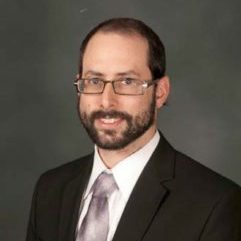I was just talking with Nick the Caretaker over at United Methodist Church on Colonial. Nick lives in Norfolk now, but he used to be the valet guy up in Woodbury Commons. Nick’s seen the Jewish communities of New York, Spring Valley, Kiryas Joel, and “all of them places”. He had one comment: “You guys are G-D’s chosen people”. He asked if it was hard to be chosen.
I didn’t respond to Nick, but I thought of my recent vacation in Lancaster County, PA. After shacharis at Congregation Degel Israel of Lancaster, I overheard an intense Halachic discussion. The issue was batteries and how the Amish people found a Heter (dispensation) to use them. A local was explaining that the really frum Amish (takeh) do not use batteries and that the permissibility of running water is dubious (“a big Shaila” ) as well. Somebody argued that batteries were never a problem and that the prohibition only began with the advent of centralized electric plants. Others invoked the concepts of ‘Shaas Hadchak’ and Gezeiros that are not practical to uphold.
It seems that Amish Country, PA is a favorite destination for religious Jews. The people are dressed modestly and the Pennsylvania Dutch way of life is intriguing. The locals even speak a little Yiddish. (Not that Yeshivish/ Chassidish people were the only tourists. At a souvenier shop in Bird-in-hand, we met some Amish tourists who were visiting from Ohio).
We learned that the Amish have a very high retention rate, with most Amish children settling down (eventually) to an Amish way of life. Children are obligated to live Amishly, but once they reach adolescence they are allowed to make their own educated decision about their chosen religion. Many Teenagers go through a period of ‘Rumspringa’ (from the Yiddish ‘Arum-Shpringen’ – jumping around) before signing up with the Amish faith for life.
Recently, a Jewish educator cited the success of Amish Chinuch and wondered why we do not implement some of their policies in our own schools. The point was also made that many sheltered Jewish communities, particularly Chassidish ones, are already very similar to the Amish.
Well, The new school year is just starting and I suppose we could give it a try: All the students could wake up early to do their chores on the farm before riding their buggies (barefoot) to the one room schoolhouse where learning is prohibited after eight grade and quoting too much scripture is frowned upon. We could encourage adolescents to completely disregard our value system while “Shpringing Arum” for a couple years and then, after they rejoin the community, we could shun them and put them into Cheirem if they ever try wearing a button-down shirt or driving a mini-van or getting health insurance.
The truth is that most outsiders have no idea why the Amish do what they do, and I’m not sure the Amish know either. While they can be respected for finding a way of life that works for them, they are not role models for an idealized Jewish life. The fact is that almost all of the beliefs and practices that are unique to the Amish are based on the New Testament. The Amish are traditional and decent people, but their values do not even claim to be Torah values. What works for the Amish does not work for us.
Last week, I was invited to New Square for the Skvere Rebbe’s grandson’s Sheva Berachos. I watched the Chassidishe version of Arum-Shpringen as a thousand adolescent Chassidim jumped up and down on the bleachers singing tefillos with tears in their eyes and passion in their words. The Amish are against lively songs and they are against congregating for prayer. They are probably against bleachers too.
To quote Nick the Caretaker, “The Jews are the chosen people”. We have our own unique and special way of coming close to Hashem and it goes far beyond what we wear and where we live and whether we have televisions. In my humble opinion, an educator who compares the Amish to the Chasidim is misinformed and, frankly, a little bit too sheltered.

Good point(s)!
I am amazed at how you managed to tie together all those previously unrelated experiences and still come up with a coherent blog with a lesson.